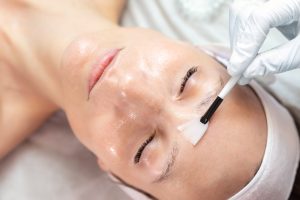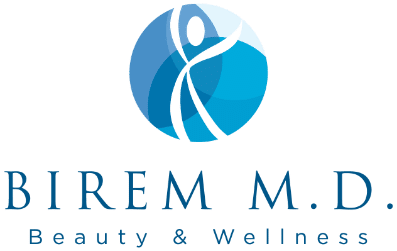
There are several treatment options for acne; two of the most prominent ones are chemical peels and microneedling. Which of the two is better suited for solving your acne problems? Keep reading to find out.
How Much of a Problem is Acne?
Most people experience this skin condition at some point in their lives. Eighty percent of the population between the ages of 11 and 30 are predicted to develop acne at some point. One of the most prevalent skin concerns worldwide is acne. Practically no one is safe from it; people of all ages – except very young children – can get acne. How does this problem form?
How Acne Forms
Hair, sebum, bacteria, and dead skin cells block your skin’s pores, causing acne. These obstacles bring on blackheads, whiteheads, nodules, and different types of pimples. Dead skin cells and sebum, an oil that helps prevent skin from drying out, clog pores, causing lesions to appear, often known as pimples or zits. The eruptions typically affect the face but can also affect the back, chest, and shoulders. Two of the most effective treatments against acne are chemical peels and microneedling.
What are Chemical Peels?
Chemical peels are frequently used to heal acne scars, damaged skin, and wrinkles on the face. They may be performed separately or in conjunction with other cosmetic procedures. Additionally, they can be performed at a range of depths, from shallow to deep. The results of deeper chemical peels are more prominent, but the healing process takes longer. A chemical peel solution removes the outermost layers of skin – resulting in softer skin. You might need to use a light or medium peel more than once to get the desired results.
How Chemical Peels Work
The components of a chemical peel determine how it functions. Chemical peels are capable of nearly anything for your skin because there are many different components and ingredient combinations. The ingredients of three types of chemical peels we offer are alphahydroxy acid, trichloroacetic acid, and phenol. Alphahydroxy acid is the least invasive of the three. It treats fine wrinkles, dryness, uneven pigmentation, and acne since it contains glycolic, lactic, and fruit acids that smooth and brighten skin. Trichloroacetic acid: acne treatment is the most common application for trichloroacetic acid (TCA). The drug is available in various strengths to address issues of different severity. It is also an exfoliant, removing old skin cells and promoting the production of new ones. TCA chemically exfoliates the skin while reducing sun damage, hyperpigmentation, fine lines, wrinkles, melasma, acne scarring, and other skin imperfections. Phenol is the most potent chemical peel; it addresses more severe skin issues such as deep facial wrinkles and skin damage brought on by sun exposure, aging, or birth control pills. The patient’s natural pigmentation affects the suitability of a phenol peel because phenol can brighten skin where it is administered.
Side Effects of Chemical Peels
Infection and scarring are two potential concerns associated with each type of peel. A phenol peel can decrease or remove the new skin’s capacity to develop pigment evenly, resulting in a lighter or uneven skin tone. TCA peels have the potential to cause unwanted color changes in the skin.
What is Microneedling?
Microneedling is a minimally invasive medical aesthetic procedure that stimulates the body’s natural healing mechanisms. The healing process includes the increased production of collagen and elastin, two of the most critical proteins in the skin. Microneedling is sometimes known as collagen induction therapy. Microneedling uses tiny needles to inflict controlled wounds on the skin. Collagen production is predominantly boosted due to the skin’s response to mend itself.
How Microneedling Work
Microneedling is a technique that punctures the skin using tiny needles. The wounds are just big enough to cause the skin to trigger healing but too small to provide any lasting harm that might result in wounds or scars. The physician will clean your skin to reduce the risk of infection before beginning the microneedling procedure. Then, they will apply a topical analgesic to ease any potential discomfort. Most patients say that microneedling is a comfortable technique; it is not painful. Increased collagen and elastin production is one of the healing processes that microneedling promotes. The underlying protein that makes up the skin’s structural and supple components is collagen. Elastin, on the other hand, is the building block that gives skin elasticity and resilience, allowing it to return to its pre-injury shape. The two proteins work together to give skin a youthful appearance. They stop the majority of aging symptoms from developing, such as: ● Wrinkles and fine lines ● Acne scars ● Stretch marks ● Hyperpigmentation ● Loose skin (after drastic weight loss) ● Rosacea Side Effects of Microneedling For 24 to 48 hours, minor peeling, swelling, dryness, and pimples are typical. Your skin will appear young and bright within a few days if you follow the post-treatment recommendations and utilize the suggested products. Results should improve over the following few months as more collagen and elastin are produced.
Which is Better for Acne, Microneedling or Chemical Peels?
Your skin’s look will improve with both chemical peels and microneedling. Chemical peels typically work best on minor flaws, whereas microneedling targets more severe problems by penetrating deeper. A mix of chemical peels and microneedling produces the best outcomes for many patients with acne scars. Microneedling will penetrate the skin more deeply to encourage the healing of damaged regions. A chemical peel can further renew your skin after the microneedling procedures are finished, giving you clearer, more youthful-looking skin. A single treatment can improve the skin, but most will need multiple treatments to see the best results. It’s crucial to consult with skincare experts to find out which treatment is ideal for you.
Acne Problems? Talk to Dr. Birem, M.D.
Birem M.D. Beauty & Wellness gives you several options for treating acne. We offer chemical peels, microneedling, and specialized acne therapy. Consult with us regarding your acne problems to get the best treatment available. You can reach us at 703-712-7870 or through our contact form. Our address is 1355 Beverly Road, Suite 325, McLean, VA 22101.

